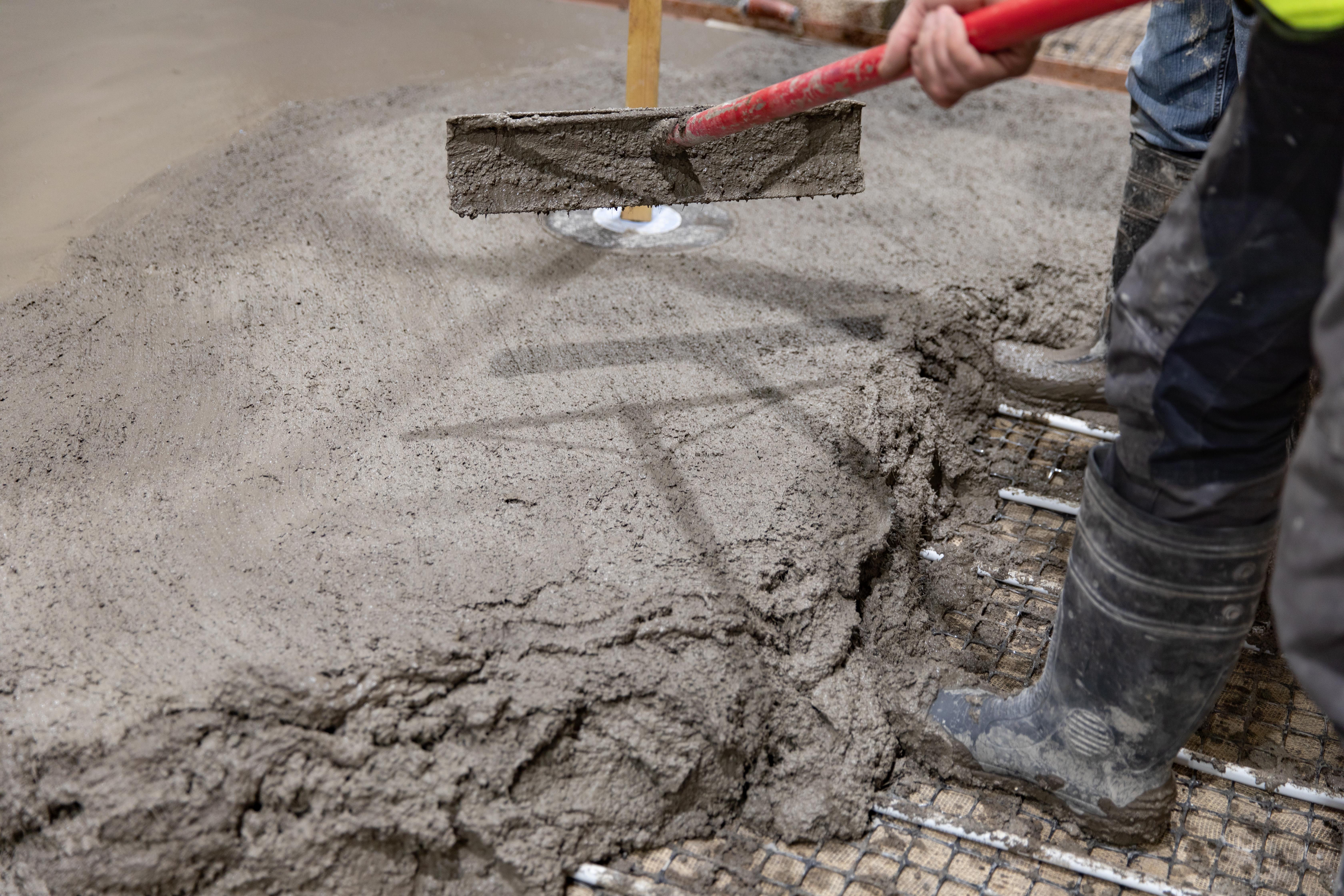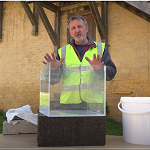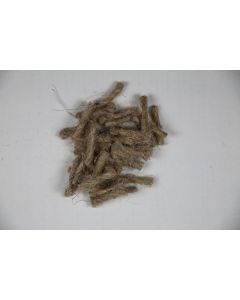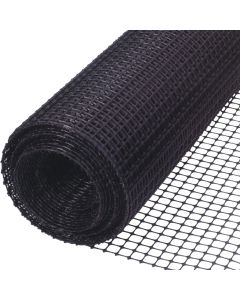Sublime® Insulated Limecrete Floor
Tŷ-Mawr’s Sublime® floor system was designed with solid wall construction in mind, to mitigate the risks that are created when a damp proof membrane (DPM) is introduced to a building of traditional construction. The high performing technical properties of the materials mean this system is equally appropriate for new builds and extensions.


The sublime® system comprises of two primary layers; the Glapor Recycled Foamed Glass Insulating Gravel and the Limecrete slab. The minimum depth for the sublime® floor is 150mm for the Glapor (RFG) and 100mm for the Limecrete, if a higher level of insulation is required the depth of Glapor (RFG) can be increased.
The Glapor (RFG) is a high-performance gravel made from 100% recycled glass, it’s exceptional qualities allow it to provide 3 key functions in the construction of a ground bearing floor, this simplifies the construction build up which can significantly save on labour.
- Damp protection: Glapor (RFG) is a non-capillary material which provides a wicking break that prevents moisture movement through capillary action (how moisture moves through soil). This means the Glapor is able to provide damp protection for the Limecrete without introducing the problems that typically occur when introducing a conventional damp proof membrane (DPM) into a building of solid wall construction without a modern damp proof course (DPC)
- Insulation: Glapor (RFG) is a closed cell insulation that is formed from a large number of small air bubbles trapped in glass, this gives it a known thermal conductivity of 0.078W/mK which insulates the slab from the subsoil reducing heat loss.
- Structural hardcore: Glapor (RFG) is a structural hardcore with a tested compressive strength, which means it provides the necessary support for the Limecrete with no requirement for an additional Type1 / MOT subbase below.
The Limecrete slab is an alternative to the conventional concrete slab made from a blend of natural hydraulic lime (NHL) and recycled aggregate with screed fibres, it provides a load-spreading element over the Glapor to distribute loads applied to the floor as well as providing thermal mass.
We are proud to be able to supply all the materials needed to complete a sublime® Insulated Limecrete Floor, please use our on-line calculation form to provide us the information required to calculate a U-value and the material quantities and you will be emailed a competitive quotation.
Our team has almost 30 years of experience with our Sublime Insulated Limecrete floor system and offer pre and post sales support. Please call us with any queries on 01874 611350 or email our technical team who will be able to assist.
Introduction to the Sublime Insulated Limecrete Floor System
What is Limecrete?
Limecrete has three main components, Limecrete binder, aggregate and screed fibres, the mix ratio is 3 to 1 (3:1) by volume, with 3 parts aggregate to 1 part lime and 900g of screed fibres per tonne of aggregate.
Limecrete Binder: The active ingredient that binds the limecrete together is Natural Hydraulic Lime, we use an NHL 5 for Limecrete as this creates a strong slab that cures relatively quickly and allows other work to continue. While the NHL 5 is not as vapour permeable as some of the softer limes (NHL 3.5 / NHL 2) the higher compressive strength and quicker set time makes it more suitable for the limecrete, the reduced vapour permeability does not affect the overall performance of the slab and will not create any risk for the adjoining masonry especially as it will be isolated by the expanded cork edge insulation.
Aggregate: As standard we supply a recycled aggregate for the limecrete that is processed from reclaimed building materials to reduce the use of quarried aggregates, this has a maximum grain size of 4-5mm and has suitable grading curve for use in a screed. However, the aggregate used for the limecrete can vary from a sharp sand (4mm down to dust) to a conventional concreting ballast (20mm down to dust) depending on the preference of the installer.
Screed Fibres: Screed fibres are mixed into the limecrete to provide additional flexural strength and to help control shrinkage as the limecrete dries, we would recommend that the screed fibres are always included in the limecrete mix. Conventionally a man-made screed fibre is used but this results in a hundreds of plastic particles entering the ecosystem and wastewater systems during washdown, we prefer the use of natural fibres wherever possible and have a Hemp fibre
Water: The quantity of water required to create a workable mix will vary based on the moisture content of the aggregate, this can vary significantly even within the same bag especially if the bags are stored outside. Water will settle towards the bottom resulting in a higher moisture content towards the bottom of the bag. A guideline for water content is to use around half the volume of lime, this should be added cautiously to ensure the mix does not become too wet and more or less may be required. Please note that the limecrete will become more fluid as it mixes so adding too much water can result in a very loose mix after the required 15 minutes of mixing.


















